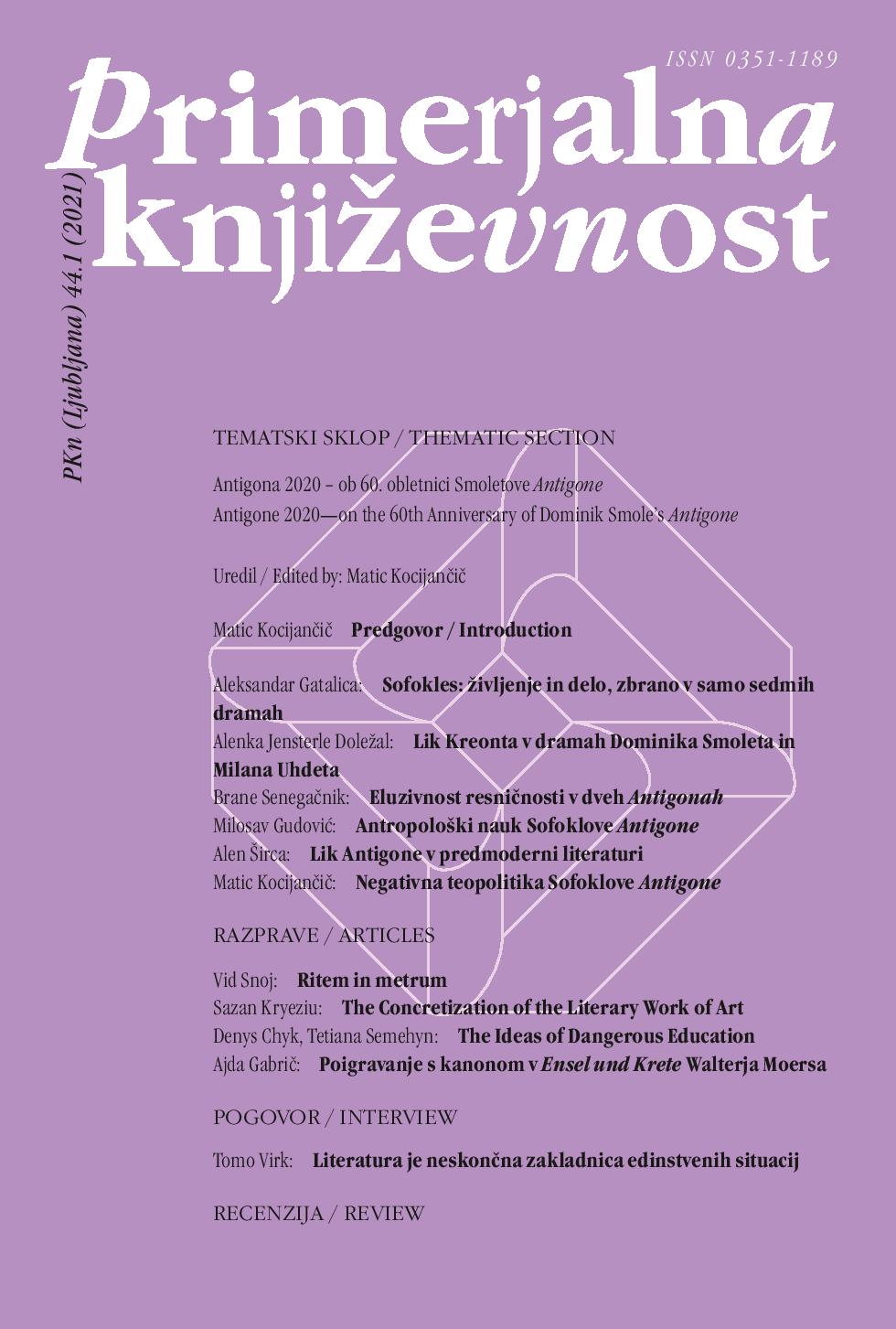The Concretization of the Literary Work of Art: Elements for a Comparison between Roman Ingarden and Wolfgang Iser
DOI:
https://doi.org/10.3986/pkn.v44.i1.08Keywords:
literary theory, phenomenology of reading, places of indeterminacy, concretization, Ingarden, Roman, Iser, WolfgangAbstract
The notion of concretization introduced by Roman Ingarden in his seminal work The Literary Work of Art makes the reader the one responsible for the creation of the literary work of art as an aesthetic object. Prior to the act of reading, “the work itself,” in Ingarden’s analysis, is a structure of various strata: the stratum of verbal sounds, the stratum of meaning units, the stratum of schematized aspects, and the stratum of represented objectivities. The reader concretizes the work, turning the schematic formation into an accomplished aesthetic object. Concretization is accomplished by adding determinations to the schemata of the text on all strata. By way of their psychic operations readers fill in places of indeterminacy and establish the world of the literary work of art. Wolfgang Iser takes up Ingarden’s concept of places of indeterminacy to develop his own position. Iser recasts the concept of indeterminacy in the form of gaps or “blanks” which allow for more functions and forms than those stated in Ingarden’s analysis. For Ingarden, the process of reading moves in one direction: from the real world to the imaginary (intentional) world. For Iser the process of reading is two-directional: the reader fills in the blanks of the imaginary world using the memory traces collected in his or her mind that derive from the life-world. An attempt to clarify the main points of Ingarden’s phenomenology of reading, may, therefore, elucidate Iser’s contribution. In addition, the notion of concretization has seen many criticisms (R. Wellek, G. Poulet, S. Fish, D. Barnouw among others), and the topic deserves renewed attention.
References
Brinker, Menachem. “Roman Ingarden and the ‘Appropriate Aesthetic Attitude’ to the Literary Work of Art.” <em>Poetics Today</em> 5.1 (1984): 129–148.
Brinker, Menachem. “Two Phenomenologies of Reading: Ingarden and Iser on Textual Indeterminacy.” <em>Poetics Today</em> 1.4 (1980): 203–212.
Bundgaard, Peer. “Roman Ingarden’s Theory of Reader Experience: A Critical Assessment.” <em>Semiotica</em> 194 (2013): 171–188.
Culler, Jonathan. <em>On Deconstruction: Theory and Criticism after Structuralism</em>. Ithaca, NY: Cornell University Press, 1982.
Fish, Stanley. “Why No One’s Afraid of Wolfgang Iser.” <em>Diacritics</em> 11.1 (1981): 2–13.
Heidegger, Martin. <em>Poetry, Language, Thought</em>. New York, NY: Harper & Row, 1971.
Holub, Robert C. <em>Reception Theory: a Critical Introduction</em>. London; New York, NY: Methuen, 1984.
Ingarden, Roman. <em>The Cognition of the Literary Work of Art</em>. Evanston, IL: Northwestern University Press, 1973.
Ingarden, Roman. <em>The Literary Work of Art: an Investigation of the Borderlines of Ontology, Logic, and Theory of Language</em>. Evanston, IL: Northwestern University Press, 1973.
Iser, Wolfgang. “Talk like Whales.” <em>Diacritics</em> 10.2 (1980): 57–74.
Iser, Wolfgang. <em>The Act of Reading: A Theory of Aesthetic Response</em>. Baltimore, MD; London: Johns Hopkins University Press, 1978.
Mitscherling, Jeff. <em>Roman Ingarden’s Ontology and Aesthetics</em>. Ottawa: University of Ottawa Press, 1997.
Ricoeur, Paul. <em>Time and Narrative. 3</em>. Chicago, IL: University of Chicago Press, 1988.
Rudnick, Hans H. “Roman Ingarden’s Literary Theory.” <em>Analecta Husserliana</em>. Vol. IV. Ed. Anna-Teresa Tymieniecka. Dordrecht: D. Reidel Publishing Company, 1976. 105–119.
Szczepańska, Anita. “The Structure of Artworks.” <em>On the Aesthetics of Roman Ingarden: Interpretations and Assessments</em>. Eds. Bohdan Dziemidok and Peter J. McCormick. Dordrecht: Springer Netherlands, Kluwer Academic Publishers, 1989. 21–54.
Wellek, René. <em>Discriminations: Further Concepts of Criticism</em>. New Haven, CT: Yale University Press, 1970.


